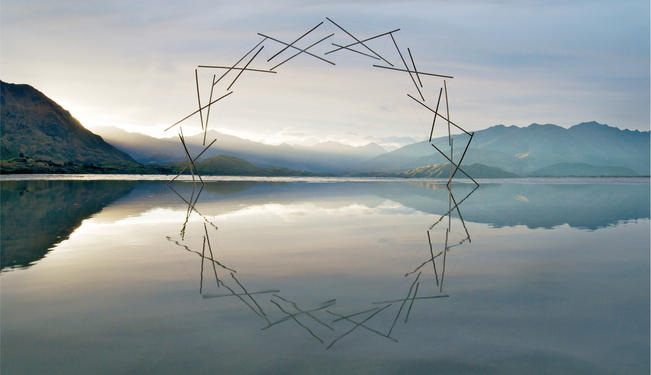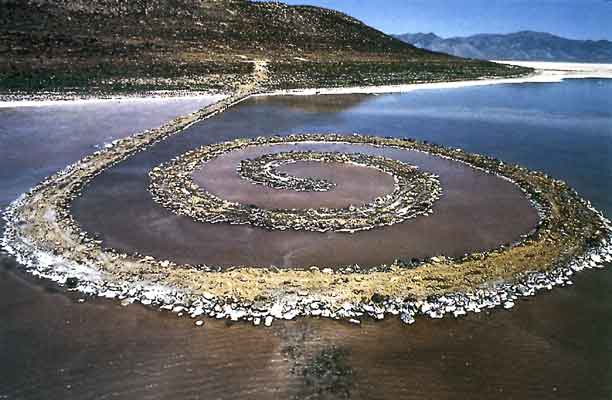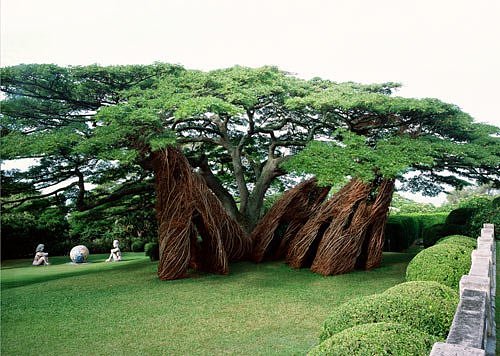In the documentary ‘Rivers and Tides’, artist Andy Goldsworthy often rises in the pre-dawn, bearing cold and often frostbite, to piece together ephemeral sculptures of ice, stone, twig, or leaf. One of the most striking things about his pieces are that they are both obviously the work of the human hand and are seamlessly a part of the land itself – made of it. I’m reminded that we too are of nature, not separate from it.
Goldsworthy is not the first artist to integrate their art into the landscape. An art movement called land art, earth art, or earthworks began in the late 1960’s. The term was first coined by Robert Smithson, who created sometimes massive on-site pieces, such as spiral jetty (below), who’s over 6000 tons of earth and basalt have survived being submerged several times by rising tides.
Smithson, who was also a prolific writer in art theory and criticism, began to divide his art into site and non-site works. The non-site works were those displayed in galleries, with materials (often large mounds of earth and stone) brought in to create them.
Site works, those built on the land of its own material, eventually evolved into a movement called site-specific sculpture, in which sculptural pieces are built with their relationship to the landscape in mind.
It’s this relationship with the land that I’ve come to realize is what draws me to these works of art – the relationship between human and nature that I am drawn to explore within myself and which I want our society to explore far more fully.



